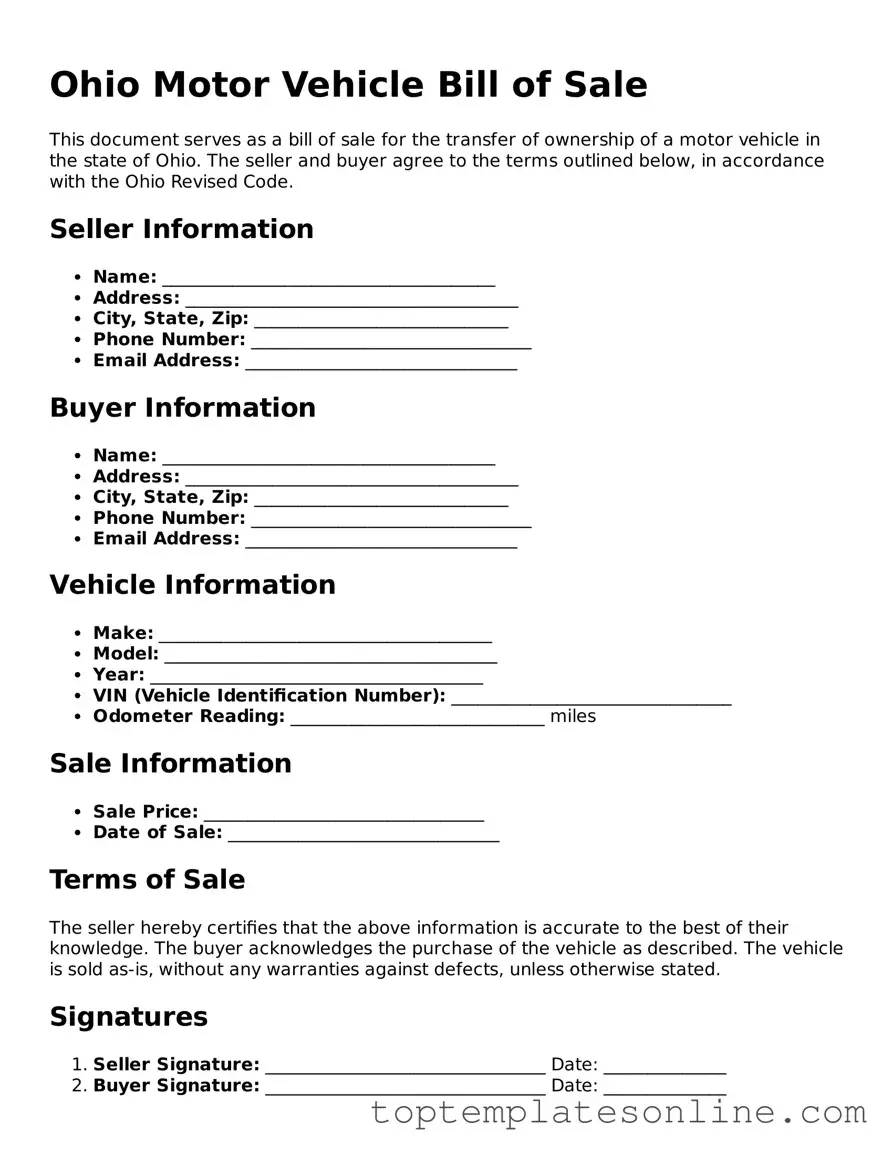Blank Motor Vehicle Bill of Sale Template for Ohio State
The Ohio Motor Vehicle Bill of Sale is a legal document that records the transfer of ownership of a vehicle from one party to another. This form provides essential details about the vehicle and the transaction, ensuring both the buyer and seller have a clear understanding of the sale. Completing this form is a crucial step in the buying and selling process, safeguarding the interests of both parties involved.
Customize Motor Vehicle Bill of Sale Here
